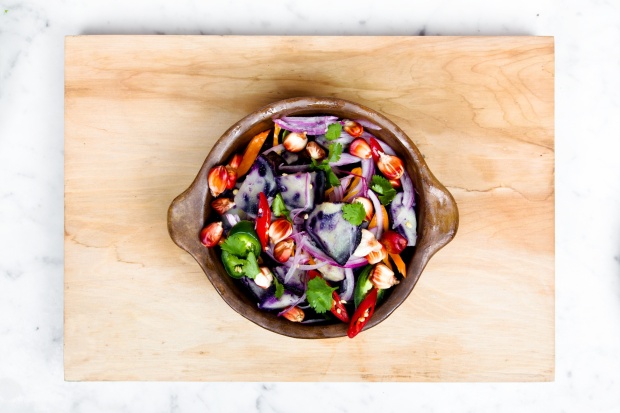
Vegetables are the most nutrient-dense foods on the planet. Ideally we should aim for 10-12 servings of vegetables and fruit per day at a ratio of 5 vegetables for every 1 serving of fruit. Vegetables have the nutrients we need to keep our metabolism functioning properly and fibre that will keep us full longer.
Not eating enough fruits and veggies can lead to vitamin and mineral deficiencies which can result in a decrease of the following:
- our energy
- our metabolism
- our motivation
- our mood
- our performance
- our ability to shed fat
Yikes! That’s a list of things I want more of – not less. It’s a great reminder when meal planning for your family. We NEED to eat plenty of fruits and veggies!!
Here’s a few tips on how to increase our daily intake:
- Top off your breakfast oatmeal with sliced bananas or fresh berries or use bananas in your pancake batter.
- Put a bowl filled with washed fruit on the top shelf of the refrigerator so it will be the first thing you see
- Keep a bag of pre-cut veggies in the fridge with hummus, guacamole or nut butter for dipping
- Aim to eat at least one veggie or fruit with every meal and snack
- When eating at a restaurant include a tossed salad or a side order of veggies (and skip the fries)
- Explore new foods and cook one new vegetable every month until you find ones that you like and want to eat regularly
- Practice Meatless Mondays and cook vegetarian meals loaded with tonnes of veggies
- Hide more veggies – grate/chop veggies into your smoothies, soups, meatballs, pasta sauce and put them into your baked goods like loaf bread, scones and muffins
- Double the amount of veggies that a recipe calls for (it usually will make it tastier!)
- Mix cauliflower into mashed potatoes
- Make an on-the-go veggie snack bag for you and your kids (if they are hungry enough they will eat anything)
- Replace a bun on your burger with a lettuce wrap (you can even request this at McDonalds)
- Stock your freezer with frozen veggies. They don’t spoil and you will always have something for dinner
- If you are super busy and pressed for time. Splurge on pre-cut veggies so they are ready to eat.
- Sweeten your baked goods with dates instead of sugar
- For those of you with a big sweet tooth, try eating a couple of dried figs for dessert. They sell yummy ones at Costco
A serving of fruit/veggies is:
- 1 medium size fruit or vegetable
- use your fist as a reference – 1 fist is one serving or 1/2 fist is one serving for starchy vegetables such as potatoes
- 2 cups or 2 fists is one serving of leafy greens (spinach, kale, romaine etc)
- 1/4 cup of dried fruit which is about the size of a small box of raisins
- Do not include fruit/veggie juice (unless you use your own juicer) as a serving of fruit/veggies. It’s missing too much of the beneficial fibre and nutrients.
All fruits and vegetables contain Phytonutrients. These are natural, protective substances found in plants that give them their unique colour and gives us nutritional defences to fight disease. To get the full range of health benefits associated with phytonutrients, try to eat a rainbow of colours every day. Try to eat at least one fruit or vegetable from each colour. Here are the colour groupings with the nutrients and benefits of each:
Red – containing lycopene and ellagic acid for heart, cell and immune health
Orange/Yellow – containing alpha-carotene, beta-carotene, hesperidin, beta-cryptoxanthin for eye health, healthy immune function, maintaining skin hydration, and healthy growth and development
Green – containing EGCG, lutien/zeaxanthin, isoflavones, isothiocyanate for cell health, supporting arterial function, lung health, and maintaining healthy liver function
Blue/Purple – containing resveratrol and anthocyanidins for cognitive health, heart health, supporting artierial function and antioxidant protection
White – containing allicin, quercetin for healthy bones, circulatory health and supporting arterial function
Eating real food like fruits and vegetables makes us feel good and keeps us healthy. Nobody ever said “I regret eating healthy today”. You deserve the best! Fuel your body with the best food.
